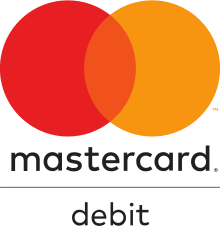Glossaire des Termes
Obtenez les définitions des principaux termes associés au cannabis que vous trouverez sur notre site.
-
510-thread
A term used in relation to vapes, 510-thread is a common type of connection that makes vape cartridges universally compatible with a large variety of batteries. Some vape cartridge... -
autoflowering
Autoflowering refers to a cannabis seed that has been manipulated to flower without the usual specific lighting and growing cycle requirements of regular seeds — it will automatically flower after about 10 weeks of germination, regardless of the light conditions. Cannabis seeds can also be regular (not genetically engineered in any way) or feminized. -
blunt
The term blunt describes cannabis flower that’s rolled in a thicker, cigar-like wrap, often made of hemp. Traditionally, blunts are created by emptying a cigar of its loose-leaf tobacco and replacing it with cannabis. In Canada, legal cannabis products may not contain nicotine.
Note that the OCS does not carry products that contain nicotine.
-
bong
A type of water pipe, a bong is a device used for smoking dried cannabis flower. It’s typically made up of four components: a bowl, downstem, base and tube. Dried cannabis is placed in the bowl and lit. The resulting smoke is drawn through the downstem and into the water in the base, where it bubbles. It then rises into the tube and is inhaled -
borosilicate glass
Often used to make bongs, bubblers and other types of water pipes, as well as dab rigs, borosilicate glass is known for its durability and capacity to withstand higher temperatures than traditional glass. The glass is a blend of silica and boron oxide, and is often used for lab equipment, lighting and glass cookware such as Pyrex. When it does break, borosilicate glass tends to crack into larger pieces instead of shattering, which means it’s less dangerous than standard glass. -
bud
The consumable flower of the cannabis plant is called the bud. The quality of the bud is not determined by its size but by its aroma and flavour, and the density of its trichomes. -
cannabinoid
Cannabinoids are the chemical compounds in cannabis that can be isolated for different uses. They are responsible for producing the intoxicating and non-intoxicating effects associated with consuming cannabis.
While the most commonly known cannabinoids are THC and CBD, over 100 have been discovered, including many minor cannabinoids, such as CBN and CBG. -
cannabis
Cannabis is the proper name for the plant that’s also referred to in slang terms as weed, pot, reefer, ganja and marijuana. Cannabis typically describes the whole plant, including the leaves, flowers, stems and roots.
-
Cannabis Act
The Cannabis Act is a federal law that came into force Oct. 17, 2018, legalizing access to recreational cannabis in Canada. The law governs the production, distribution, sale and possession of cannabis across Canada and protects public health and safety.
Each province and territory is responsible for setting its own rules around how cannabis can be sold and where stores may be located, among other regulations. In Ontario, recreational cannabis is available for purchase only by adults 19 years of age or older and only through Authorized Cannabis Stores and OCS.ca. It is illegal to purchase cannabis from non-licensed sources.
Learn more about who does what in the sale of legal cannabis.
-
Cannabis indica
Originating from the Hindu Kush mountain range within Afghanistan and Pakistan, Cannabis indica plants are generally faster-growing, bushier and up to six feet shorter than Cannabis sativa, with dark green leaves. It was once thought that sativa and indica produced distinct
-
cannabis oil
Cannabis oil is a cannabis extract — a concentrated substance derived from the plant — that is mixed with a carrier oil, such as medium-chain triglyceride (MCT) or sunflower oil. It can be packaged in a bottle with a spray top or dropper and is taken orally. It can be used as an alternative to smoking or vaporizing dried cannabis. Learn more about cannabis oil. -
Cannabis ruderalis
Cannabis ruderalis is less common than Cannabis indica and Cannabis sativa. This species is short and stalky
Cannabis sativa
Originating from South America, the Caribbean and Africa, Cannabis sativa can grow up to 25 feet and has long serrated light green leaves. It’s typically taller and more slender than Cannabis indica. Sativa and indica were once thought to produce distinct
capsule
A capsule, or cap, is a small sphere or cylinder often made of gelatin that’s filled with cannabis extract (often mixed with a carrier oil) and meant to be swallowed (a cannabis consumption method also referred to as ingestion)carrier oil
Carrier oils are used in beverages, edibles, cannabis oil, topicals and other products consumed through ingestion or topical application -
CBC
Cannabichromene, or CBC, is a non-intoxicating minor cannabinoid that has not been well studied. Limited experimental research has shown its promise in providingCBD (cannabidiol)
Cannabidiol, or CBD, is a non-intoxicating cannabinoid found in cannabis. While CBD is psychoactive
-
CBDA
Cannabidiolic acid, or CBDA, is the non-active form of cannabidiol, or CBD, and it’s found in fresh cannabis plants. The CBDCBG
Cannabigerol, or CBG, is a minor cannabinoid with non-intoxicating effects. It is present in trace amounts in most strains, starting as cannabigerolic acid, or CBGA, before converting to other cannabinoids like THCA and CBDA.
Research is ongoing to uncover CBG’s potential to treat neurological disorders, including Huntington’s disease, Parkinson’s disease and multiple sclerosis, as well as inflammatory bowel disease. Other studies are underway to investigate its antibacterial properties.
-
CBN
Cannabinol, or CBN, is a minor cannabinoid that develops when THC oxidizes over time. Exposure of dried cannabis to oxygen and heat, a process called decarboxylation, speeds up this process. Little research has been done to date, but -
clone
A clone is a plant that is an exact genetic copy of its original mother plant. Instead of being grown from seed, a clone is produced by taking a cutting from a healthy plant with desirable characteristics. The cutting is placed in a solution that helps it form roots so it can eventually be transplanted into soil. -
cola
Cola is the botanical term for clusters of buds on a female cannabis plant. Colas are harvested, dried and packaged as whole flower
concentrate
Concentrates, as their name suggests, offer a much higher potency than other cannabis products. Concentrate products include hash, rosin, kief, shatter, wax, budder, resin, distillate and isolate.
While the terms extract and concentrate are often used interchangeably, they are unique processes. Concentrates can be made with or without solvents. Solventless concentrates, such as kief, hash and rosin, use physical methods, such as sifting, freezing and pressing, as well as heat and water extraction, to separate active ingredients from plant materials. Concentrates that are made using solvents like ethanol or butane include distillate and isolate. Solvents can strip the cannabinoids, terpenes and flavonoids from the plant, but these can be added back to the final product. -
cultivar
Cultivar is a horticultural term that means “cultivated variety,” which refers to a plant that has been selected and improved on by humans. It is considered a more accurate term than strain when referring to plant varieties. -
curing
Curing is the final step in the process of cannabis flower preparation. It involves storing dried buds in an airtight, controlled environment to allow the moisture to distribute evenly through them. Proper curing helps improve the flavour, aroma and overall quality of the cannabis.
-
dab rig
A dab rig is an accessory used for dabbing cannabis concentrates. A small amount of concentrated cannabis, such as wax, is dabbed onto a heated element and the resulting vapour is inhaled. Dab rigs are <... -
dab, dabbing
A dab is a small amount of concentrated cannabis, such as shatter or wax, that is consumed using a dab rig or dab pen, or vaporizer. A small amount of concentrate is touched against a heat source, in most cases a titanium, glass, quartz or cera...
-
decarboxylation
Decarboxylation, or decarbing, uses high temperatures to activate the psychoactive effects of cannabis. When you heat cannabis flower, through smoking, vaporizing or cooking, for example, it causes a chemical reaction that turns cannabinoid acids like CBDA and
dispensary
A dispensary is a term used for a store that sells cannabis. Legal cannabis products are sold through Authorized Cannabis Stores, which are privately owned retail store
distillate
Cannabis resin can be refined through heating and condensing to isolate a specific compound, such as THC. The resulting liquid is a concentrated form of cannabis, called distillate, that’s often used in vape cartridges,dose
When referring to cannabis and cannabis products, the dose is the amount consumed (typically measured by the amount of THC) or the frequency of consumption. There is no specific dosage for cannabis products — only you can determine how much is right for you. Health Canada suggests starting with a low doseedible
Edibles are cannabis products meant to be consumed in the same manner as food or drinks that have been infused with cannabis extracts or concentrates. Edibles include gummies, chocolates, soft chews, beverages, lozenges and baked goods. Health Canada currently limits the potency of edibles to 10 mg THC per package.







